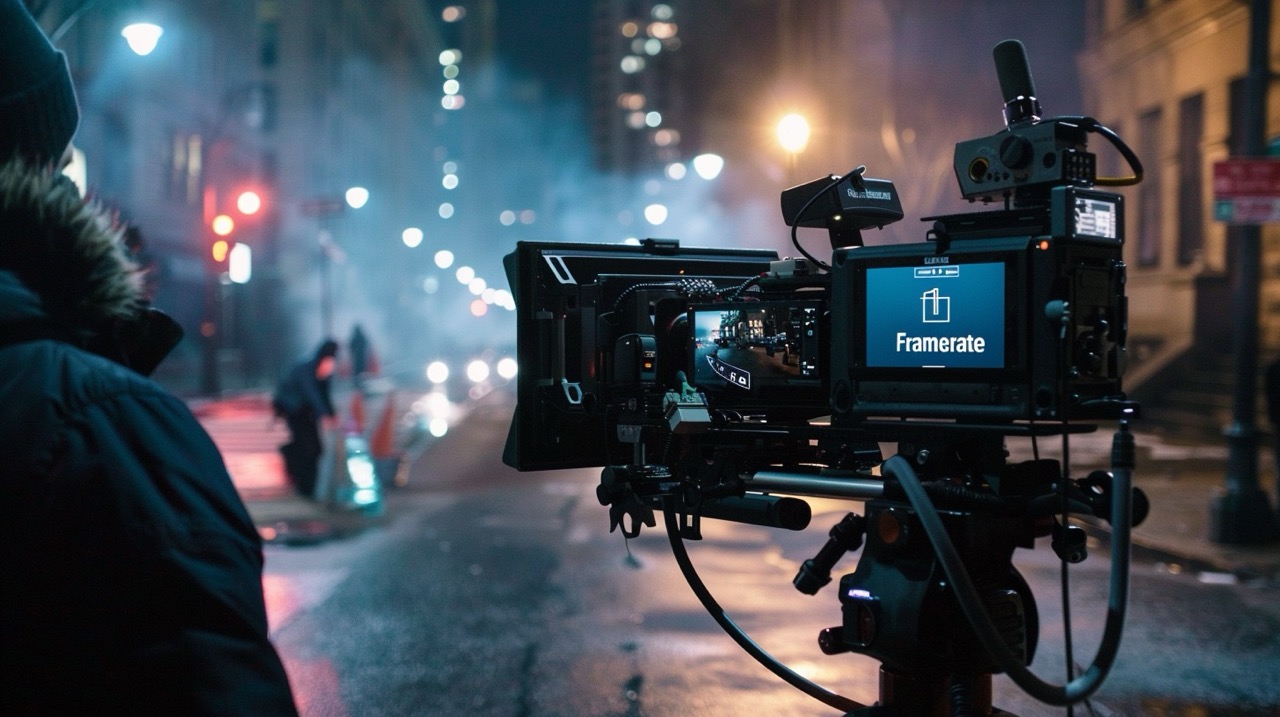Framerate, the pulse of cinematic motion, plays a pivotal role in the storytelling prowess of filmmaking. It's the unseen thread that weaves through the fabric of high-quality film production, dictating the smoothness of motion and the visual clarity that audiences experience. This deep dive explores the essence of framerate in filmmaking, unraveling its impact on the narrative, emotional resonance, and the overall cinematic experience.
At its core, framerate refers to the number of individual frames or images displayed per second in a film. Expressed in frames per second (fps), it's a fundamental concept that filmmakers manipulate to achieve desired visual effects and emotional impacts. From the standard 24 fps that gives cinema its dreamy quality to higher rates that bring hyperreal clarity, framerate is a versatile tool in the arsenal of filmmakers.
The Historical Standard: 24 fps
The choice of 24 fps as the standard framerate for cinema has roots in the early days of film. Balancing technical limitations and the cost of film stock with the quest for visual fluidity, 24 fps emerged as a sweet spot. It offers a cinematic look that audiences have come to associate with the magic of the movies, where motion blur and slight stutters contribute to a dreamlike quality.
High Framerate (HFR) and its Emergence
High Framerate (HFR) filmmaking, utilizing framerates significantly higher than 24 fps, marks a revolution in how we perceive motion and detail. Films like Peter Jackson's "The Hobbit" series, shot at 48 fps, showcase the potential of HFR to enhance clarity, reduce motion blur, and create a more immersive experience. Despite its benefits, HFR also sparks debate among filmmakers and audiences alike, with some arguing that it can make films look too realistic, thus breaking the cinematic illusion.
Emotional Impact and Temporal Perception
Framerate significantly influences the emotional tone and temporal perception of a film. A lower framerate, such as 24 fps, introduces a certain jerkiness and motion blur that can enhance the emotional depth and timelessness of a story. It's particularly effective in genres like historical dramas or epic fantasies, where filmmakers seek to evoke a sense of nostalgia or otherworldliness. Conversely, HFR can make action sequences clearer and more engaging, drawing the viewer into the scene with lifelike detail.
Visual Aesthetics and Genre Compatibility
The visual aesthetics shaped by different framerates are closely tied to genre compatibility. For instance, the dreamy, slightly surreal quality achieved with 24 fps is a hallmark of traditional cinema and works well with a wide range of genres. On the other hand, HFR finds its niche in action-packed blockbusters, nature documentaries, and live sports broadcasts, where clarity of motion and detail enhances the viewing experience.
Technical Considerations and Creative Choices
Choosing the appropriate framerate is not only a technical consideration but also a creative one. Filmmakers must weigh the benefits of smoother motion and enhanced clarity against the potential for losing the 'filmic' look. Additionally, the decision impacts post-production processes, including visual effects and editing, where varying framerates can present unique challenges.

Innovation and Viewer Expectations
As technology advances and viewer expectations evolve, the role of framerate in filmmaking continues to expand. Innovations in display technology, such as high refresh rate monitors and TVs, offer new opportunities to experiment with and present higher framerates. This technological progression, coupled with audiences' growing appetite for visually stunning and immersive content, pushes filmmakers to explore beyond traditional boundaries.
Balancing Tradition and Innovation
The future of framerate in filmmaking lies in balancing tradition with innovation. While the classic 24 fps will likely remain a staple for its timeless cinematic quality, the exploration of higher framerates opens up new avenues for storytelling. This balance ensures that filmmakers can choose the best tools to tell their stories, engaging audiences with a rich tapestry of visual experiences.
The Evolution of Audience Perception
As audiences become more accustomed to diverse visual formats, including high-framerate content, their perception and expectations evolve. This shift provides filmmakers with a broader palette to work from, enabling them to tailor the viewing experience to the narrative needs and audience preferences. The ongoing dialogue between filmmakers and viewers will shape the future of framerate in cinema, ensuring that it continues to enhance the art of storytelling.
In conclusion, framerate in filmmaking is a dynamic and multifaceted element that significantly impacts the narrative, emotional resonance, and visual clarity of films. As filmmakers navigate the balance between traditional cinematic aesthetics and the potential of new technologies, framerate will remain at the heart of creative decision-making. Whether through the timeless charm of 24 fps or the immersive clarity of HFR, framerate will continue to be a key tool in the art of storytelling, shaping the future of high-quality film production.

CINEMA LUTS VOL. 1
Turn your footage into cinematic masterpieces with our 1-Click solution LUTs. Over 30 handcrafted presets are waiting for you!
Free Tools
LUT Converter (65 to 33)
© cinema-luts.com
Imprint - Privacy Policy - Cookies - Blog